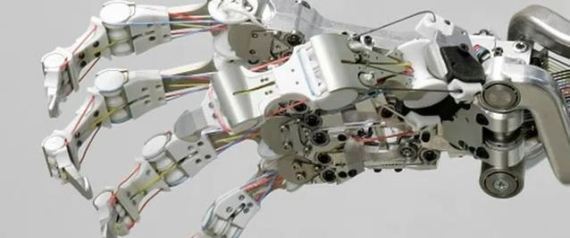
Scientists at the Institute of Robotoics and Mechatronics at the German Aerospace Center (DLR) have created a robotic hand that can withstand very hard blows, according to IEEE Spectrum. The hand's creators set out to build a hand with extreme durability, hoping to improve the robustness of robotic hands in general.
The scariest part perhaps is its uncanny resemblance to the hand of the infamous T-800, the robot model from the Terminator movies. Outfitted with a rubber and plastic shell however, the whole arm looks a bit more benign, as can be seen in the video below.
The range of motion and design of the hand is impressive.
The DLR hand has the shape and size of a human hand, with five articulated fingers powered by a web of 38 tendons, each connected to an individual motor on the forearm.
The main capability that makes the DLR hand different from other robot hands is that it can control its stiffness. The motors can tension the tendons, allowing the hand to absorb violent shocks. In one test, the researchers hit the hand with a baseball bat--a 66 G impact. The hand survived.
The single hand cost less than $135,000 to develop, according to Geek.com.
Next, the same scientists are working on a two-armed version of the robot. No word on a pair of legs--yet.












